
The ChottanikkaraDevi Temple is a temple dedicated to the Hindu mother goddess Bhagavati Lakshmi. She is believed to be residing in Chottanikkara (Mahalakshmi) along with her Husband Maha Vishnu. The main deity is also considered as Lakshmi Narayana according to the temple legend. The temple is Classified one among the 108 Abhimana Kshethram of Vaishnavate tradition. The temple is located at Chottanikkara, a southern suburb of the city of Kochi in Ernakulam district, in the state of Kerala, India and is one of the most popular temples in the state. The temple is also known for conducting exorcism.

The Rajarajeshwara temple is a Shiva temple located in Taliparamba in Kannur district of Kerala State of India. The temple is regarded as one of the existing 108 ancient Shiva Temples of ancient Kerala. It also has a prominent place amongst the numerous Shiva temples in South India. It had the tallest shikhara amongst the temples of its time. The Rajarajeshwara temple has a top of about 90 tonnes. If any problem is encountered in the other temples of South India, devotees seek a solution in this temple through a prashnam, a traditional method of astrological decision-making. The prashnam is conducted on a peedha outside the temple.

Bhadrakali is a Hindu goddess. She is considered to be the auspicious and fortunate form of Adi Shakti who protects the good, known as bhadra.
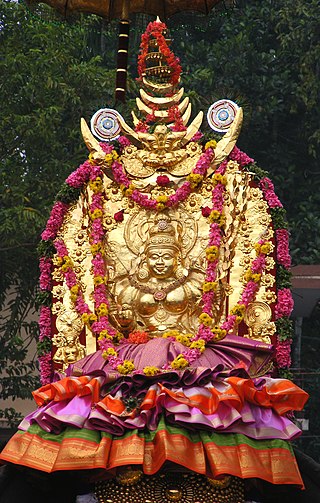
Kumaranalloor is a suburb of Kottayam city, Kottayam taluk, Kerala, India. Kottayam city is just 5 km south of Kumaranalloor. The region was administered by the Kumaranallur grama panchayath till 2010, before the local self-governing body was merged into the Kottayam municipality. The former Panchayath office now exists as the regional administrative office for the municipality. The village is situated on the banks of Meenachil river.

Thriprayar Shree Ramaswami Temple is Hindu temple situated in Triprayar in Thrissur district of Kerala state in India. The deity is Rama, the seventh incarnation of Vishnu, with four arms bearing a conch, a discus, a bow, and a garland. The temple is situated on the bank of Karuvannur river, which is called as Theevra river while flowing through Thriprayar, and presently forms a part of Canoli Canal, which connects Kozhikode and Kodungallur. The temple deity is the presiding deity of Arattupuzha Pooram. It is believed that the idol here was worshipped by Krishna, another avatar of Vishnu in Dvaraka. Along with Rama, there are shrines for Shiva as Dakshinamoorthy, Ganesha, Shastha and Krishna, and there is also worship for Hanuman and Chathan. It is the first among the four temples housing the four sons of King Dasharatha, popularly known as Nalambalams, the others being Koodalmanikyam Temple in Irinjalakuda housing Bharata, Thirumuzhikoolam temple housing Lakshmana and Payammal housing Shatrughna in that order. It is believed that worshipping these temples on a single day in the Malayalam month of Karkadakam is auspicious, and thus many devotees visit these temples.

Thirumandhamkunnu Temple is a historically significant Hindu temple in Angadipuram, which was the capital of Valluvanad Rajavamsham, in Malappuram district, Kerala state, South India. The temple deity, Thirumandhamkunnil amma, was the paradevatha of the kings of Valluvanad, the local feudal kings ruled the area in the Middle Ages. The Nair warriors of Valluvanad king set out from this temple to Thirunavaya, to participate in the famous Mamankam festival. A memorial structure called the chaver thara can be found in front of the main entrance of the Thirumanthamkunnu Temple.

The Vilwadrinatha Temple is a Hindu temple in Thiruvilwamala, a town in the city of Thrissur, Kerala, India. The principal deities are Rama, the seventh incarnation of the god Vishnu, and his brother, Lakshmana. It figures among the Abhimana Kshetrams in Vaishnavite traditions. This is one of the four major Rama temples in Kerala — the other three are in Thriprayar, Kadavallur, and Thiruvangad. The temple houses an idol of Lakshmana, which is rare in India. Vilwadrinatha Temple is located in the centre of the community of Thiruvilwamala, atop a 100-foot-high hillock. Visible from the temple is Bharathappuzha, the second-largest river in Kerala, which flows past the temple's northern side from around 3 kilometres away.

Anandavalleeswaram Sri Mahadevar Temple in Kollam city is one of the ancient Hindu temples in Kerala, India. Lord Siva and Goddess Anandavally are the main deities of the temple. According to folklore, sage Parashurama has installed the idol of Lord Shiva. The temple is a part of the 108 famous Shiva temples in Kerala. It is located at Anandavalleeswaram, a major neighborhood of Kollam city, that comes to the west side of Kollam Collectorate.
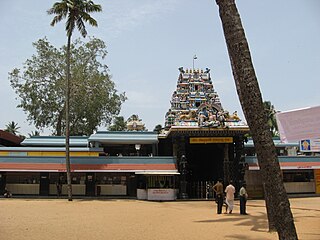
The Attukal Bhagavathy Temple is a Hindu religious shrine at Attukal in Kerala, India. Goddess Bhadrakali (Kannaki), mounted over 'vethala', is the main deity in this temple. Bhadrakali, a form of Mahakali, who killed the demon king Daruka, believed to be born from the third eye of lord Shiva. 'Bhadra' means good and 'Kali' means goddess of time. So Bhadrakali is considered as the goddess of prosperity and salvation. Goddess 'Attukal devi', itself is the supreme mother 'Bhaadrkali devi', the goddess of power and courage. She is often referred as Kannaki, the heroine of Ilanko Adikal's 'Silapathikaaram'. The temple is renowned for the annual Attukal Pongal festival, in which over three million women participate. A festival that has figured in the Guinness Book of World Records for being the single largest gathering of women for a religious activity, the Attukal Pongala continues to draw millions of women with each passing year. Attukal Temple is situated near the heart of the city, 2 kilometres away from Sree Padmanabhaswamy Temple, East Fort in Thiruvananthapuram. Devotees believe that all of their wishes will be fulfilled by the goddess, provide prosperity and can attain salvation. Attukal devi is often worshipped in 3 forms such as Maha Saraswati, Maha Lakshmi and Mahakali/ Parvathy.
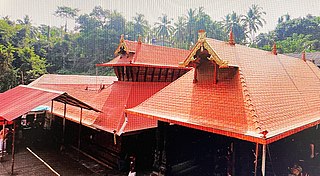
Kadampuzha Devi Temple is a Hindu temple and pilgrimage center at Kadampuzha in Malappuram district, Kerala, India. The main deity of this temple is Goddess Parvati/Durga in the form of a huntress. There is no idol of Goddess in this temple, and she is worshipped in a pit. The presence of Lord Ganesha is also believed to be with the Goddess, and there are sub-shrines for Lord Sastha and serpent deities. A separate Shiva temple exists near the temple, called 'Madambiyarkavu'. Both these temples are under the control of Malabar Devaswom Board.
PisharikavuTemple is a temple located at Kollam, Koyilandy, Kozhikode district, North Malabar region of Kerala state of south India.
The Meenkulathi Temple is located in Pallassena, a village in southern India.
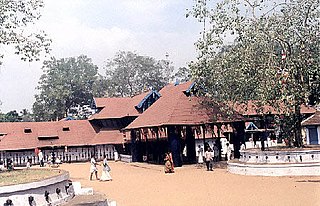
Sree Kurumba Bhagavati Temple is a Hindu temple at Kodungallur, Thrissur District, Kerala state, India. It is dedicated to the goddess Bhadrakali, a form of Mahakali or simply Durga or Aadi Parashakthi worshipped and significantly revered in Kerala. The goddess is known also by the names "Sri Kurumba"". This temple is the head of 64 Bhadrakali temples in Kerala. This Mahakali temple is one of the oldest functioning temples in India. This is attested by numerous Tamil poems and inscriptions of different times. The goddess of the temple represents the goddess in her fierce ('ugra') form, facing North, featuring eight hands with various attributes. One is holding the head of the demon king Daruka, another a sickle-shaped sword, next an anklet, another a bell, among others. Routine worship at the temple every day at 03:00 and ends at 21:00 local time.

Sree Valayanad Devi Temple dedicated to Bhagavathy, is situated in Valayanad near Kozhikode in North Kerala, India.

The MajorVellayani Devi Temple is a highly revered shrine in Kerala, India, dedicated to goddess Bhadrakali. The shrine is situated in Vellayani 1.5 km west of Vellayani junction, 12 km southeast of Thiruvananthapuram on the eastern bank of Vellayani Lake. The temple is under the management of Travancore Devaswom Board. The temple structure has a bronze roof with traditional art work and carries Dravidian architecture. The temple has eastern and northern towers called Gopurams with statues of different Gods sculptured in them. The Gopurams function as gateways through the walls that surround the temple complex.
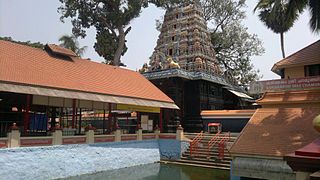
Karikkakom Sree Chamundi Devi Temple or Karikkakom Devi Temple is a temple to three Hindu goddess Chamundi located in Thiruvananthapuram, India at Karikkakom. It is more than 600 years old and enshrines a Panchaloha idol of the goddess Karikkakathamma – an incarnation of Chamundi. Chamundi Devi is worshiped there in three different forms: Maha Chamundi, Raktha Chamundi, and Bala Chamundi.
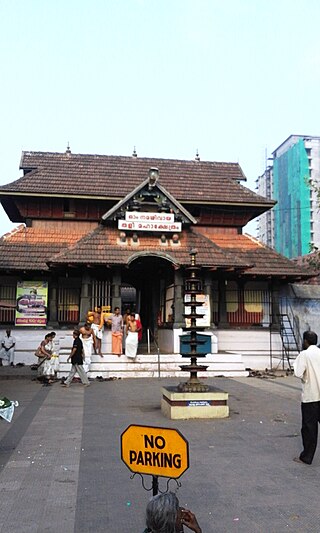
Tali Shiva Temple or Tali Mahakshetram is a Hindu temple dedicated to the deity Shiva, situated in the heart of the Kozhikode city, Kerala. The temple was built in the 14th century by Zamorin of Calicut. Tali Kshetram is an ancient temple in the heart of Kozhikode town. Shiva is the presiding deity. The Jyothirlingam in the Sanctum Sanctorum is believed to have been installed by Parasuraman. The temple is one km to the east of Kozhikode railway station. It is surrounded by the Palayam market. This was the family temple of the Zamorins who had ruled Kozhikode. Although the temple is now under Malabar Devaswom, the Zamorin is the managing trustee. The temple is built in traditional Kerala architectural style. The two-storied sanctum-sanctorum is in the shape of a chariot. It is adorned with murals and granite sculptures of Shiva’s retinue. Inside Sree Kovil deities of Tali Ganapathy, Thevarathil Ganapathy and Thrumandhakunnu Bhagavathy are installed. Sree Krishna, Thevarathil Bhagavathy, Ayyappa, Sri Vishnu and Nagam are installed outside Shiva Temple. Sree Valayanad Bhagavati idol is installed inside Sree Krishna Temple. There is a small Narasimha Moorthy temple on the southern side of the Sri Vishnu Temple.

Niranam Thrikkapaleeswaram Dakshinamurthy Temple, an ancient Hindu temple dedicated to Lord Shiva is situated on the banks of the Pampa river at Niranam of Pathanamthitta District in Kerala state in India. This temple is a classic example of the Dravidian style of architecture. The temple is the abode of Dakshinamurthy. The deity of Thrikkapaleeswaram is located in main Sanctum Sanctorum facing east. According to folklore, sage Parasurama has installed the idol. The temple is a part of the 108 famous Shiva temples in Kerala. This is one of the three Thrikkapaleeswaram temples mentioned in 108 Shiva temples. Two other temples situated in Peralassery in Kannur district and Nadapuram in Kozhikode district.

Parumala Valiya Panayannarkavu Devi Temple is an ancient Hindu temple dedicated to Sri Badrakali and Lord Shiva, situated on the banks of the Pampa river at Parumala of Pathanamthitta District in Kerala state in India. The Panaynararkavu Temple is one of the three most important Bhadrakali temples in Kerala. Thirumandhamkunnu Temple in Malabar, Kodungallur Temple in Cochin and Panayannarkavu Temple in Travancore is almost equally important. References to this temple are found in Aithihyamala of Kottarathil Sankunni and Unnuneeli Sandesam, the classics of Malayalam Literature. According to folklore, sage Parashurama has installed the idol of Lord Shiva and devi idol installed by sage Durvasa and Narada in the Treta Yuga. The temple is a part of the 108 famous Shiva temples in Kerala.

The Kanadikavu Sree Vishnumaya Kuttichathan Swami temple is an ancient and holy Vishnumaya temple located 20 km southwest of Thrissur in Peringottukara, the cultural capital of Kerala, India.


















